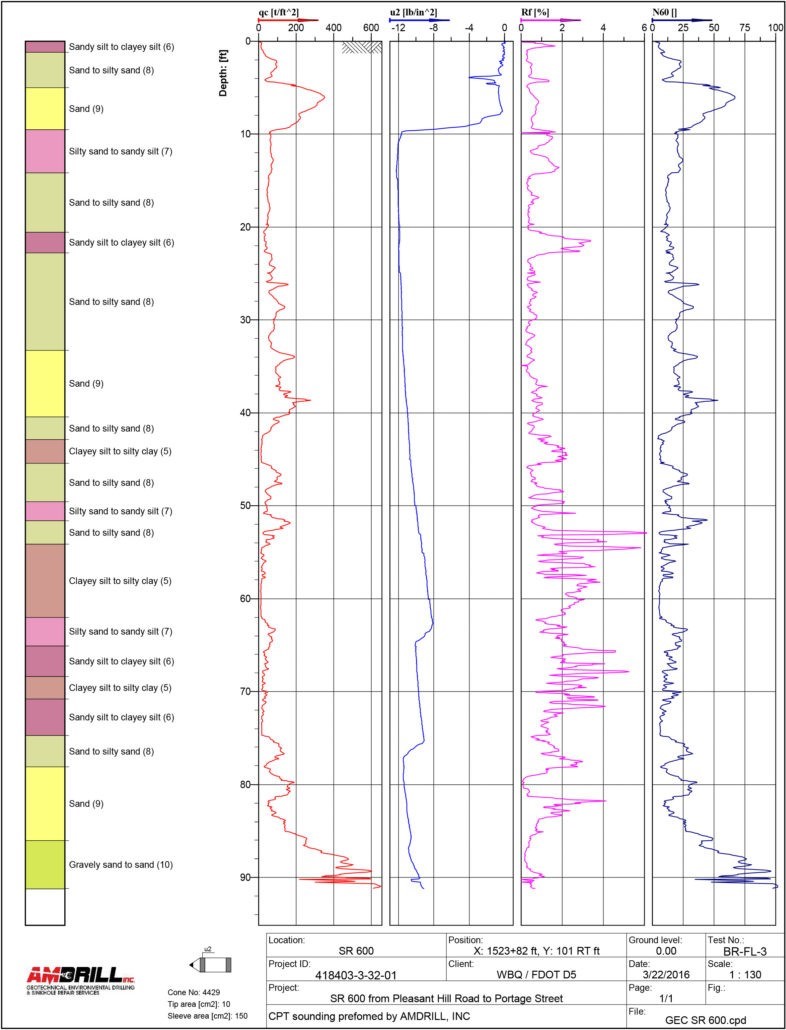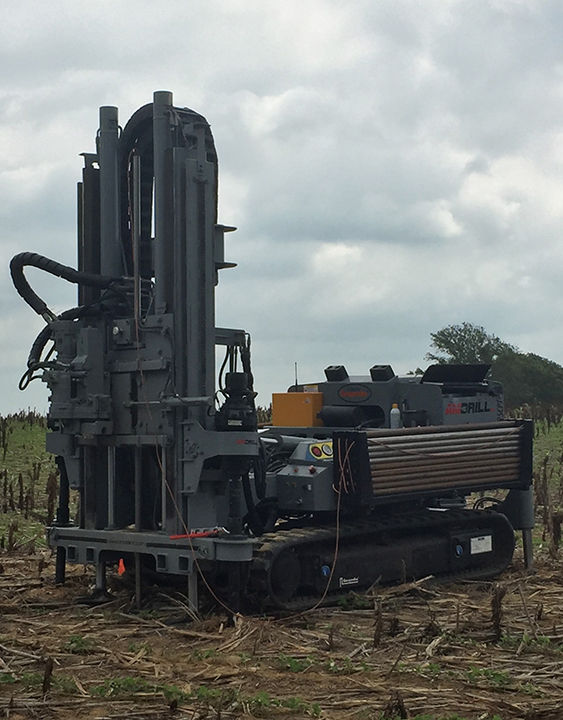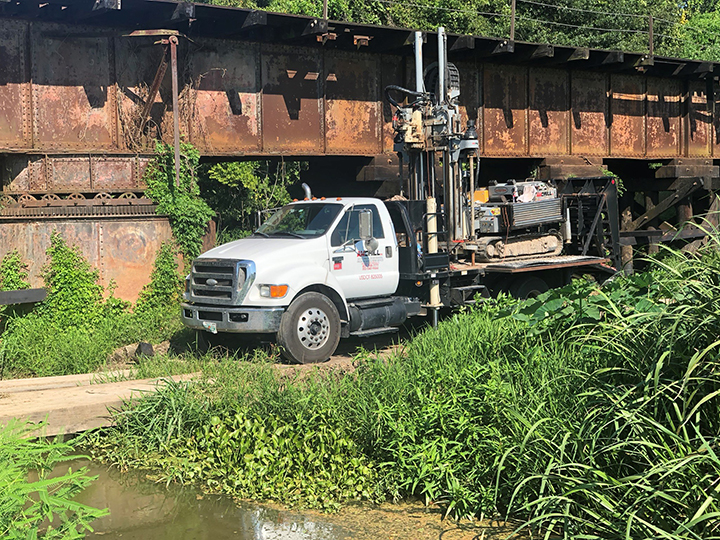What is Cone Penetration Test (CPT):
The cone penetration or cone penetrometer test (CPT) is a method used to determine the geotechnical engineering properties of soils and  delineating soil stratigraphy. CPT evaluates subsurface conditions and geotechnical soil properties. Cone penetrometer (penetration) tests are a quasi-static penetration test, meaning that the cone is pushed at a slow rate rather than driven with a hammer or rotary drilling.
delineating soil stratigraphy. CPT evaluates subsurface conditions and geotechnical soil properties. Cone penetrometer (penetration) tests are a quasi-static penetration test, meaning that the cone is pushed at a slow rate rather than driven with a hammer or rotary drilling.
In the CPT, a cone on the end of a series of rods is pushed into the ground at a constant rate, and records continuous or intermittent measurements that are made of resistance to penetration of the cone and also records the resistance of the surface sleeve on the cone. There any many types of data that can be collected using the CPT cone. The “tip resistance” is determined by the force required to push the tip of the cone and the “sleeve friction” is determined by the force required to push the sleeve through the soil. The “friction ratio” is the ratio between sleeve friction and tip resistance, measured as a percentage. Soil type and thereby resistance to liquefaction can be inferred from these measurements. ASTM D-5778 Standard Test Method for Performing Electronic Friction Cone and Piezocone Penetration Testing of Soils. Cones must be professionally calibrated annually.
AMDRILL, Inc. carries out all Cone Penetration Tests (CPT) using an integrated electronic cone system, (see figure CPT below.) The soundings are conducted using a 20 ton capacity cone with a tip area of 10 cm2 and a friction sleeve area of 150 cm2 . The cone is designed with an equal end area friction sleeve and a tip end area ratio of 0.85. The cone takes measurements of cone bearing (qc), sleeve friction (fs) and penetration pore water pressure (u2) at 5- cm intervals during penetration to provide a nearly continuous hydrogeologic log. CPT data reduction and interpretation is performed in real time facilitating an on-site decision making. The above mentioned parameters are stored on disk for further analysis and reference. All CPT soundings are performed in accordance with ASTM standard D-5778. The cone also contains a porous filter element located directly behind the cone tip (u2), see Figure CPT below. It consists of a porous bronze material and is 5.0mm thick. The filter element is used to obtain penetration pore pressure as the cone is advanced as well as Pore Pressure Dissipation Tests (PPDT’s) during appropriate pauses in penetration. It should be noted that prior to penetration, the element is fully saturated with silicon oil under vacuum pressure to ensure accurate and fast dissipation.
• Our CPT-PRO software, completes your CPT investigation.
(see CPT Log to the right)
• Presents CPT results
• Identifies soil types using the most common CPT soil behavior classifications like Robertson 1986, Robertson 1990b etc.
• Calculates and presents Geotechnical parameters
• Standard penetration test (SPT) blow count correlation
• Undrained shear strength
• Relative density
• Friction angle
• Coefficient of lateral stress
• Constrained Module






